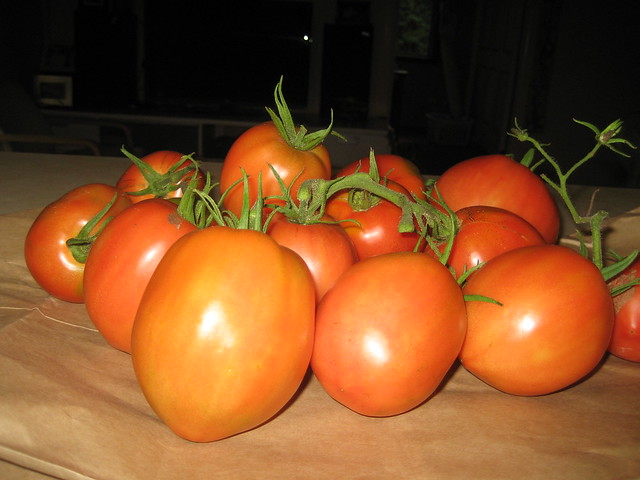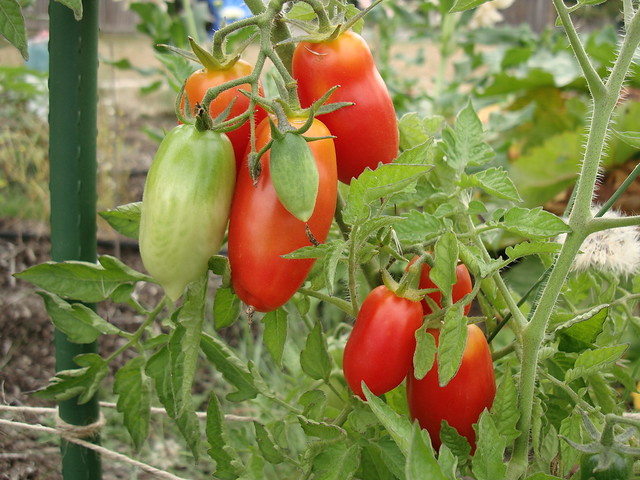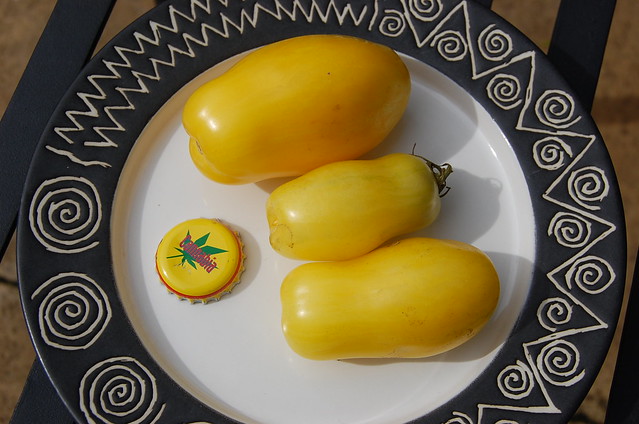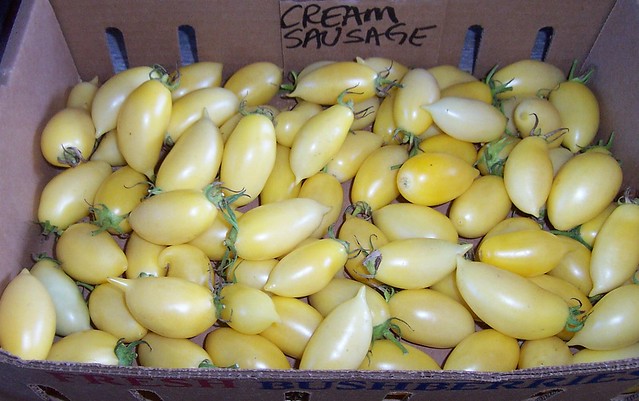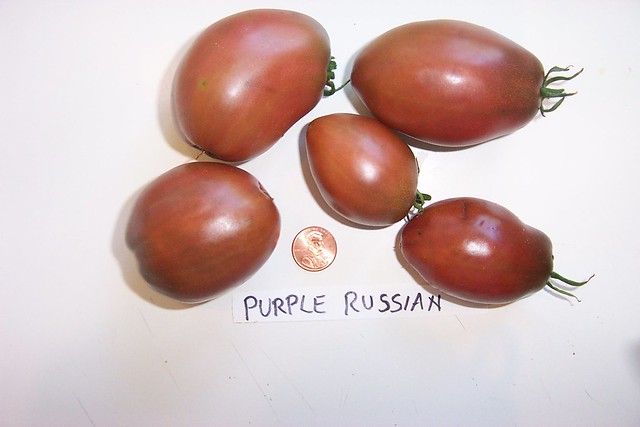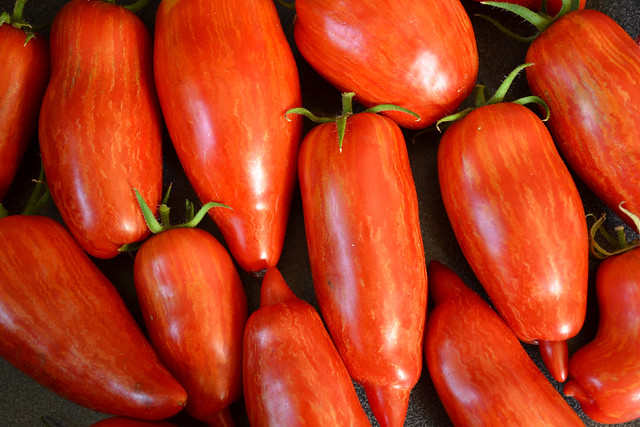4There isn’t much more satisfying than growing your own salsa garden. Being able to source most or all the ingredients for your salsa from your garden is incredibly rewarding.
One of the key components of any salsa is the tomatoes, and trust me, anything you grow in your garden, even as a beginner gardener, is going to taste 100 times better than any tomatoes at the grocery store.
There are many varieties of tomatoes you can grow in your salsa garden, but you will notice that the best tomatoes for salsas are Roma-type or paste tomatoes. This isn’t a coincidence; these types of tomatoes are less watery and more meaty so your salsa will always have the right consistency.
Below are nine of the best tomatoes you can grow for salsa (plus more suggestions), from classic varieties like San Marzano to different colored ones like Cream Sausage.
If you haven’t already done so, you can also check out my guide to peppers to grow for salsa. You have a ton of varieties to choose from depending on the flavor profile and heat level you’re looking for.
On this page:
Red Tomatoes for Salsa
If you’re growing tomatoes for salsa, you can’t go wrong with classic red tomatoes. There are many red varieties to use with superb flavor.
Other great red tomatoes for salsa: Abe Lincoln, Bonny Best, Polish Linguisa, Big Mama, Little Mama, Plum Regal, Granadero, Rio Grande, Red Oxheart, Hungarian Heart
Amish Paste
A large, intensely flavored, and versatile Amish heirloom with an abundant crop
Days to Maturity: 75 to 85 days
Type: Indeterminate, Plum/Paste
Color: Red
Tomato Size and Shape: 8-12 oz, large plum/oxheart
Open Pollinated? Yes
Get seeds: Baker Creek (US), Johnny’s Selected Seeds (US), Seed Savers Exchange (US), Burpee (US), West Coast Seeds (Canada), Incredible Seeds (Canada), Victoriana Nursery (UK)
An heirloom tomato saved for generations among Amish communities, Amish Paste is like a Roma tomato on steroids: it has a rich tomato flavor concentrated in its meaty walls, and averages at a whopping 8 to 12 oz, on average larger than many Roma tomato varieties. While most Amish Paste tomatoes are plum-shaped, occasionally, they grow into mini oxhearts.
Amish Paste tomatoes are flavorful enough that they’re also suitable for slicing and salads, but excel in salsas, sauces, and pastes.
Unlike many paste tomatoes, this variety is indeterminate, meaning you will get continual harvests all season long until the first killing frost. Very heavy-yielding variety.
San Marzano
A renowned Italian heirloom that is more flavorful and thicker-fleshed than regular Roma tomatoes
Days to Maturity: 75 to 85 days
Type: Indeterminate, Plum/Paste
Color: Red
Tomato Size and Shape: 3-6 oz, plum
Open Pollinated? Yes
Get seeds: Johnny’s Selected Seeds (US), Burpee (US), Annapolis Seeds (US), West Coast Seeds (Canada), Incredible Seeds (Canada), Sow Seeds (UK), Suttons (UK), The Seed Collection (Australia)
San Marzano tomatoes might be the only tomato on the list with a cult following outside of gardening. These are the same San Marzano tomatoes you might have seen at the grocery store for 3-5 times the price of regular canned tomatoes.
These tomatoes grow on indeterminate vines and produce profusely, with clusters of long plum-shaped fruits. San Marzanos tend to be thinner than regular Romas but make up for it with more flesh per fruit.
Prized for their exceptional flavor, San Marzano tomatoes are sweeter and less acidic than regular Roma tomatoes. They also have thicker flesh and fewer seeds, making them perfect for sauces, sun-dried tomatoes, and of course salsa. If you like to go heavy on the tomatoes in your salsa, the flavor of San Marzanos really comes through.
Juliet
Award-winning grape tomato that produces heavy clusters of superbly flavored fruit
Days to Maturity: 60 to 70 days
Type: Indeterminate, Grape
Color: Red
Tomato Size and Shape: 1 to 2 oz, large grape
Open Pollinated? No (Hybrid)
Get seeds: Johnny’s Selected Seeds (US), Fedco Seeds (US), Park Seed (US), Urban Farmer Seeds (US), T&T Seeds (Canada)
Juliet tomatoes (sometimes sold as Juliet F1) are bright red, large grape tomatoes that resemble mini Romas due to their unusually elongated shape.
In 1999, Juliet was chosen as an All-America Selections winner because of its vigorous growth, sweet flavor, and extreme crack resistance. They also tend to mature early, sometimes in as little as 60 days, and produce consistent, heavy yields of fruit, easily giving you over 100 tomatoes from just two plants. Because of this, Juliet is a staple among market growers and home gardeners alike.
Juliet tomatoes are versatile. You can use them in salsas and sauces, slice them into salads, sun dry them into little tomato-raisin umami bombs of flavor, or just snack on them in the garden. A highly recommended variety for cherry or grape tomato lovers.
Orange and Yellow Tomatoes for Salsa
Other great orange and yellow tomatoes for salsa: Amish Gold, Yellow Roma, Orange Roma, Orange Banana Plum, Roman Candle
Banana Legs
Long, bright yellow plums with sweet, fruity notes to brighten up any salsa
Days to Maturity: 75 days
Type: Determinate, Plum/Paste
Color: Yellow
Tomato Size and Shape: 4-10 oz, long plum
Open Pollinated? Yes
Get seeds: Victory Seeds (US), Tomato Fest (US), Annapolis Seeds (Canada), Plants of Distinction (UK)
Banana Legs are aptly named for their vibrant yellow color and oddly long shape, resembling a banana. Like many yellow and orange tomatoes, this heirloom variety tends to be more sweet and fruity than savory, and is also noted for having a low acid content.
Banana Legs tomatoes are determinate plants, meaning they don’t get super tall and will produce most of their tomatoes all at once, which is great if you’re into mass preserving your crop. Despite being determinate, they produce substantial yields of dangling yellow banana-shaped fruits.
These tomatoes are as good in salads as they are in salsas, and can brighten up any dish with their color and flavor.
Sunrise Sauce
Compact, disease-resistant tomato plants overflowing with sweet and meaty, sunrise-colored fruits
Days to Maturity: 55 to 60 days
Type: Determinate, Plum/Paste
Color: Orange
Tomato Size and Shape: 3-6 oz, short plum
Open Pollinated? No (Hybrid)
Get seeds: Johnny’s Selected Seeds (US), Totally Tomatoes (US), Harris Seeds (US), T&T Seeds (US), Veseys (Canada)
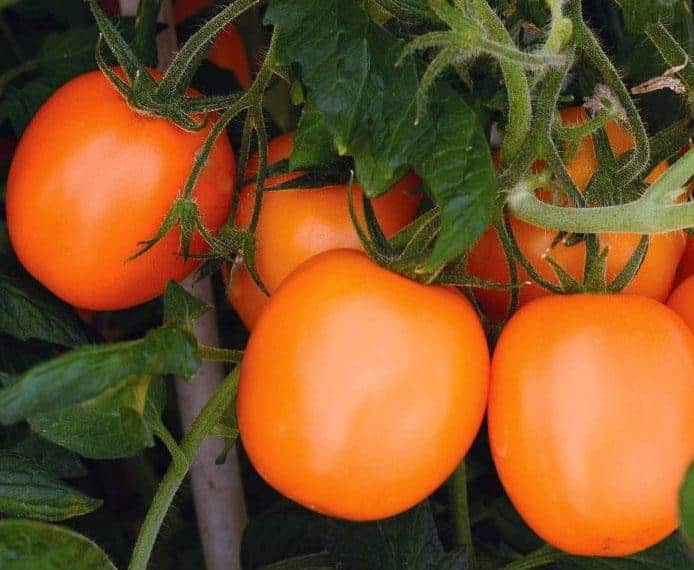
The appropriately named Sunrise Sauce tomatoes are an ideal variety to grow if you’re tight on space but want bright orange tomatoes and want to add a little extra sweetness to your salsa.
Sunrise Sauce fruits themselves have excellent, sweet flavor and low acidity making a bright addition to any salsa or sauce, or can be used as the sole tomato variety to make a unique orange salsa (perhaps combined with orange/yellow peppers?). They are meaty and not too watery, just like other plum/Roma varieties, but are not quite as long as traditional Romas.
These tomatoes are determinate and grow on nice compact plants that rarely grow taller than 3 feet, and show high disease resistance to the fungal diseases verticillium wilt and fusarium wilt race 1. A relatively low-maintenance, high-yielding variety for the salsa garden and perfect for containers.
Cream Sausage
Heavy producer of long, pale-yellow-to-creamy-white tomatoes with low acid and high sugar content
Days to Maturity: 70 to 80 days
Type: Determinate, Plum/Paste
Color: Pale Yellow
Tomato Size and Shape: 2-5 oz, long plum
Open Pollinated? Yes
Get seeds: Seed Savers Exchange (US), Tomato Fest (US), Victoriana Nursery (UK), Simply Seed (UK)
The Cream Sausage tomato, sometimes sold as Banana Cream, is another prolific, determinate tomato variety with uniquely colored fruits. These elongated, sausage-shaped tomatoes range from pale yellow to almost white, making them perfect for light yellow sauces or mixed with other varieties to brighten up a salsa.
Although this is a determinate bush variety, it will need staking or a tomato cage, as it’s a very heavy producer, sometimes yielding as much as 60 lbs of tomatoes per plant if grown in ideal conditions. But otherwise, it’s a compact grower that’s well-suited for container gardening.
Tomatoes with Unique Colors for Salsa
Other great unique-colored tomatoes for salsa: Mint Julep, Black Roma, Chocolate Striped Icicle, Dwarf Audrey’s Love
Purple Russian / Ukrainian Purple
A strikingly dark plum tomato bursting with sweet and tangy flavor
Days to Maturity: 80 to 85 days
Type: Indeterminate, Plum/Paste
Color: Dark Red/Burgundy
Tomato Size and Shape: 5 to 7 oz, plum
Open Pollinated? Yes
Get seeds: Seed Savers Exchange (US), MIGardener (US), HRSeeds (US), Tomato Fest (US), Totally Tomato (US), Incredible Seeds (Canada), Premier Seeds Direct (UK)
The Purple Russian (also called Ukrainian Purple) is an old heirloom that is sweet, tangy, and flavorful, but renowned for its deep burgundy flesh.
The shoulders (top part) of the Purple Russian tend to stay somewhat green even after ripening. The interior is a nice rich red color.
As an indeterminate tomato, this variety will produce crack-resistant tomatoes all season long and definitely requires staking and a lot of space to grow. Purple Russians are prolific producers and fairly disease resistant. A reliable producer in northern climates.
Dwarf Saucy Mary
A unique dwarf tomato that produces full-sized fruits that ripen green and very juicy
Days to Maturity: 65 to 75 days
Type: Dwarf (Indeterminate), Plum/Paste
Color: Green and Yellow (Striped)
Tomato Size and Shape: 4-6 oz, plum (variable)
Open Pollinated? Yes
Get seeds: Victory Seeds (US), Tomato Fest (US), HRSeeds (US), Renaissance Farms (US)
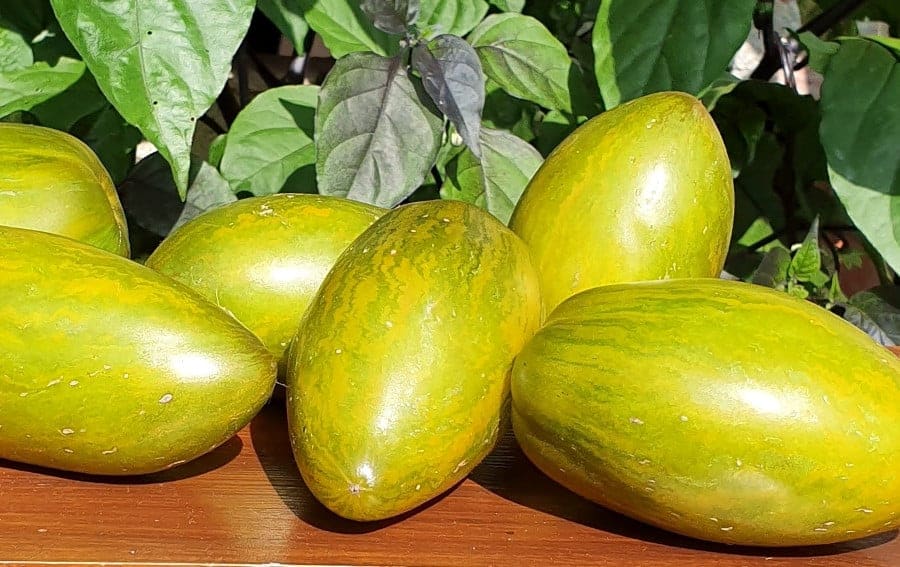
You don’t need unripe green tomatoes to make green salsa. The Dwarf Saucy Mary tomato is a tomato whose flesh stays lime green when ripe. It is also notable for having yellow and green streaks on the skin.
As a dwarf tomato, Dwarf Saucy Mary plants only reach around 2.5 feet tall, sometimes taller, making them suitable for container growing. However, they are still excellent producers. Excellent for green sauces, green salsas, and guacamole, but juicy enough to eat fresh, too.
Note: When Dwarf Saucy Mary tomatoes are ripe, they will feel soft when slightly squeezed and the yellow streaks on the skin will look more prominent.
Speckled Roman
Heavy-producing paste variety with gorgeous orange and red streaks and excellent flavor
Days to Maturity: 80 to 85 days
Type: Indeterminate, Plum/Paste
Color: Red and Orange (Striped)
Tomato Size and Shape: 6-8 oz, large plum
Open Pollinated? Yes
Get seeds: Johnny’s Selected Seeds (US), Seed Savers Exchange (US), Tomato Fest (US), Fedco Seeds (US), Hudson Valley Seed Company (US), Incredible Seeds (Canada)
Another streaked variety, the Speckled Roman is a plum variety with red and orange stripes running lengthwise. While it has a striking appearance in the garden, the interior has normal red/pink flesh. It’s a stabilized cross between Banana Legs and Roman Candle, both of which are excellent paste tomatoes in their own right.
Speckled Romans have few seeds, is quite meaty with little gel, and has balanced, old-fashioned tomato flavor. Because of its flavor and texture characteristics combined with its high yields, it’s a favorite for both market growers and home gardeners. Highly recommended for a pure sauce/salsa tomato.
Why Paste and Roma Tomatoes Are Best for Salsa
While you can use any tomato for salsa, paste or Roma-type tomatoes are ideal because they have a lower water content, less gel, fewer seeds, and meaty flesh.
Using regular tomatoes will often lead to a watery salsa, especially as the salsa sits for a few hours and the moisture is drawn out of the flesh. This is also why paste tomatoes are better for pastes and sauces, as you don’t need to spend too much time cooking them to reduce them into the right consistency.
Taste-wise, there is usually not much difference between using paste tomatoes and regular tomatoes, and some regular tomatoes like Abe Lincoln, Sungold cherry, or Cherokee Purple can add a ton of flavor to your salsas. The only difference you might notice is some paste tomatoes have a stronger flavor, but that’s mainly due to the lower water content diluting the taste.
Using Non-Paste/Non-Roma Tomatoes in Salsa
If you’re not growing paste/Roma tomatoes, you can still use your other tomatoes in salsa, but to get the best consistency, you should draw some water out first.
For fresh, raw salsa, dice your tomatoes and lightly salt them, then leave them to drain on a paper towel or in a strainer for a few hours in the fridge.
For cooked salsa, or salsa you’re preserving, you can do the same thing or you can cook down your tomatoes until they reach the right consistency first before adding in the rest of the ingredients.

